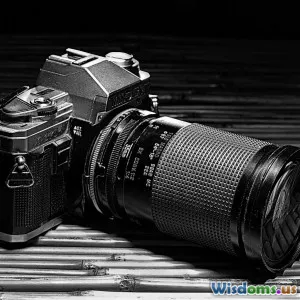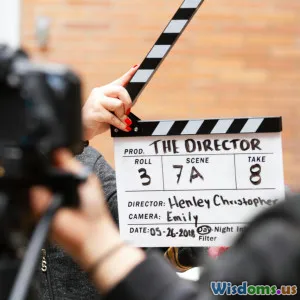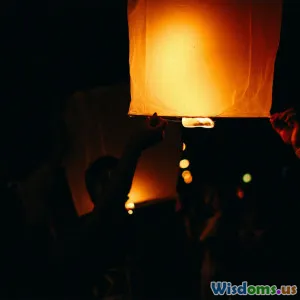
Are Old School Directing Styles Making a Comeback in 2024
8 min read Explore how vintage directing techniques are resurging in 2024, blending classic craftsmanship with modern filmmaking innovation. (0 Reviews)
Are Old School Directing Styles Making a Comeback in 2024?
In recent years, the cinematic landscape has witnessed a significant shift—not just in storytelling but in the very approach to directing films. As technology races forward, a curious counter-movement has surfaced: a resurgence of old school directing styles that defined classic cinema. By 2024, this trend is not merely nostalgic but strategic, blending time-tested methodologies with the advantages of the digital era. But what exactly are these old school directing styles, why are filmmakers reverting to them, and how do they hold up amid modern techniques and audience expectations? This article delves into the practical and artistic reasons behind this resurgence and what it means for the future of cinema.
Understanding Old School Directing Styles
Old school directing is often characterized by several hallmark approaches that emphasize craftsmanship, deliberate pacing, and practical effects, contrasting the fast-paced, CGI-heavy filmmaking prevalent today. Iconic directors like Alfred Hitchcock, Stanley Kubrick, and John Ford exemplified these styles through their meticulous shot composition, reliance on in-camera effects, and naturalistic performances.
- Auteur-driven vision: Directors were seen as the 'author' overseeing every creative aspect.
- One-shot takes: Longer scenes without quick cuts helped build tension and immerse audiences.
- Practical effects and lighting: Physical models, miniatures, and controlled lighting rather than digital alternatives.
- Character-focused narratives: Emphasizing emotional and psychological depth rather than spectacle.
These techniques demanded intense collaboration, planning, and a connection with actors and crew, creating films that often transcended their era.
The Context for a Comeback
Technology and Industry Changes
The past decade has been dominated by rapid advances in digital filmmaking and special effects. While CGI opened new creative possibilities, many filmmakers and audiences started feeling a saturation of hyper-stylized visuals that sometimes sacrificed storytelling depth. As director Christopher Nolan famously stated, “A film that relies too heavily on digital effects risks losing the audience’s emotional connection.” Nolan himself adheres to old school methods, using practical effects and minimal CGI in classics like Dunkirk (2017), underscoring a preference for tactile realism.
By 2024, improvements in digital tools paradoxically facilitated old school methods: higher-resolution film scans, improved color grading for vintage aesthetics, and digital editing enabled directors to experiment more freely while respecting classic film language.
Audience Demand for Authenticity
A growing segment of viewers today craves authenticity and tangible storytelling. This is evident in the rise of films that employ minimal green screen and extensive use of location shooting, echoing practices dominant in early and mid-20th century cinema.
299 million viewers in 2023 streamed films praised specifically for their "timeless directing style," according to Nielsen ratings, signaling a powerful market trend.
Case Studies: Directors and Films Leading the Revival
Greta Gerwig's Barbie (2023)
While known for modern indie sensibilities, Greta Gerwig embraced deliberate, in-camera lighting and practical set designs for Barbie, blending whimsical realism with craftsmanship reminiscent of 1950s studio films. Her directing style balanced vibrant compositions and intimate character work, generating acclaim for breathing fresh life with an old-school foundation.
Quentin Tarantino
Tarantino’s commitment to long takes, deep focus, and dialogue-driven scenes has been celebrated for decades. His latest works in 2024 reaffirm a timeless approach, favoring carefully rehearsed scenes and classic framing over rapid editing—a direct homage to 70s and 80s cinema.
Denis Villeneuve’s Dune: Part Two (2024)
Villeneuve integrates grand scale with meticulous, detail-oriented direction. His use of practical effects combined with subtle CG enhancements honors a legacy of epic storytelling through grounded cinematic technique.
Why Old School Techniques Still Matter
Enhanced Storytelling Impact
Optical effects, long takes, and hand-crafted sets do more than dazzle—they provide texture and maintain narrative coherence. Films like The Irishman (2019), which heavily used de-aging effects within old school lighting and blocking, demonstrate how these techniques produce immersion still hard to replicate with pure CGI.
Actor Performance and Emotional Depth
Directors such as Paul Thomas Anderson continue to prioritize rehearsed, naturalistic acting combined with carefully framed shots. This encourages performers to deliver rich, authentic performances fostered by long-standing techniques.
Cinematic Language Preservation
Maintaining approaches like continuity editing, 180-degree rules, and motivated lighting preserves a common cinematic language extending back a century—allowing wider audience accessibility and critical appreciation.
Challenges and Limitations
Despite the enthusiasm, old school directing isn’t perfectly suited to all projects or budgets. It can be more time-consuming and less cost-effective without digital shortcuts. Also, younger audiences accustomed to rapid visual dynamics may find it slower. Nonetheless, hybrid filmmaking—melding vintage techniques with modern sensibilities—is often the sweet spot.
Conclusion: Embracing the Past to Innovate the Future
The comeback of old school directing styles in 2024 reflects a broader cinematic renaissance valuing authenticity, story depth, and emotional resonance. As filmmakers rediscover and adapt classic techniques, cinema gains renewed richness and diversity. This trend encourages industry professionals and enthusiasts alike to appreciate the art’s roots while embracing modern innovations.
For aspiring directors, film students, and cinephiles, this revival is both a lesson and inspiration: mastery of fundamentals paired with creative evolution leads to storytelling that stands the test of time.
Take action: film professionals might consider integrating old school elements in upcoming projects, while viewers can seek out these gem movies that honor tradition, expanding appreciation of film history and craft.
References
- Christopher Nolan interviews, IndieWire (2022)
- Nielsen Audience Reports (2023)
- Interviews with Greta Gerwig, Variety (2023)
- Analysis of Tarantino’s style, The New Yorker (2024)
- Industry panel discussions, TIFF 2024
This article aims to inform and inspire a deeper understanding of directing artistry and cinematic storytelling evolving in the 21st century.
Rate the Post
User Reviews
Other posts in Directing
Popular Posts















